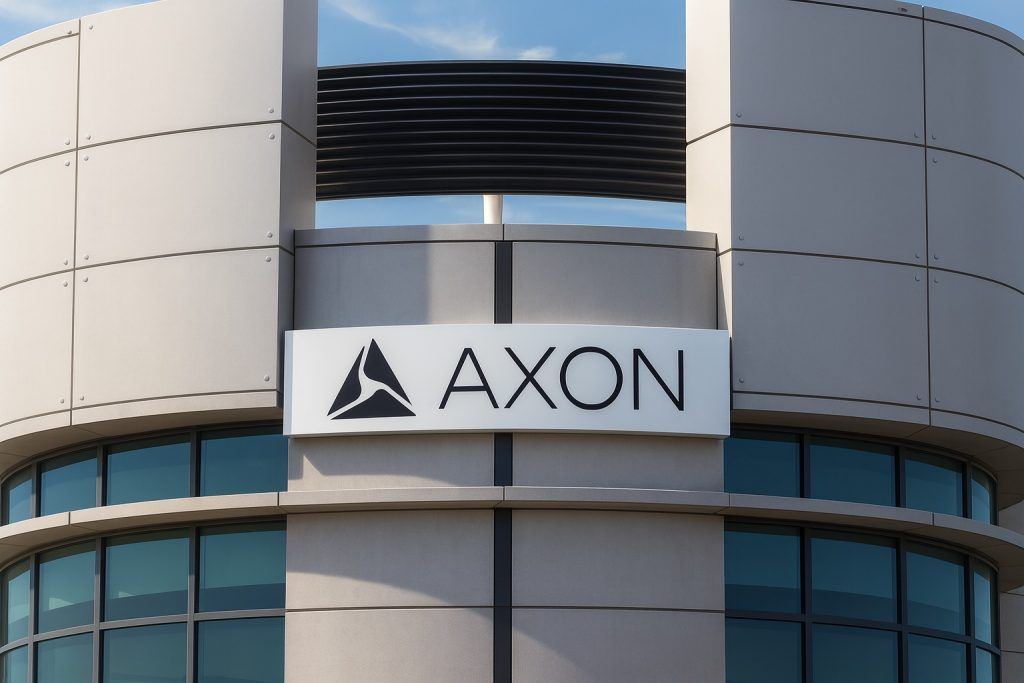- Wild 170% Rally, Then Sharp Pullback: Plug Power’s stock went on a dizzying surge over the past three months, rocketing from penny-stock levels to a 52-week high around $4.18 by mid-October – a +170% rebound amid “green hydrogen” hype [1]. At its peak the stock was up ~65% year-to-date, but euphoria faded fast. After closing at $3.40 on Oct. 20, PLUG plunged over 8% the next day (low of $3.05) and continued sliding to about $2.92 by Oct. 22 [2] [3]. Heavy profit-taking and a spike in trading volume (111 million shares on Oct. 21 vs ~95M average) accompanied the pullback [4], leaving shares hovering in the low-$3 range as of Oct. 23, 2025.
- Analyst Upgrades Ignite Hype: A wave of bullish Wall Street calls sparked Plug’s autumn rally. In early October, H.C. Wainwright doubled its price target to $7 (from $3) – the Street’s highest – citing surging power costs that make green hydrogen “more competitive” and reiterating a Buy rating [5]. TD Cowen soon raised its target to $4.50 (Buy) after CFO meetings unveiled a “roadmap to profitability,” and other brokers followed suit [6]. The bullish frenzy – including a one-day +34% spike off the $7 call [7] – forced bearish short-sellers to cover their positions. Over 30% of PLUG’s float had been sold short, fueling a classic short squeeze as panicked shorts rushed to buy back shares [8]. Even peer hydrogen stocks jumped (e.g. Ballard Power +23% in sympathy) amid the sector-wide “hydrogen hype” rally [9].
- Skeptics Tap the Brakes: Not everyone is convinced by Plug’s rocket ride. Morgan Stanley reaffirmed an Underweight rating on Oct. 16 with a mere $1.50 target, and analysts’ 12-month targets range widely from about $1.50 to $4.40 [10]. HSBC, by contrast, set a Street-high $4.40 target (Strong Buy) on Oct. 9 [11]. In total, the Wall Street consensus is lukewarm – roughly 1 Strong Buy, 5 Buys, 7 Holds, 6 Sells – averaging out to a “Hold” rating with an average price target of ~$2.54 [12]. This means on average, analysts see PLUG trading below current levels in a year. As one skeptic put it, the 170% spike may have run “too far, too fast” [13] given the company’s still-bleak fundamentals.
- Cash Burn vs. Funding Lifeline:Plug Power remains deeply unprofitable. Q2 2025 revenue grew +21% year-on-year to ~$174 million [14], but the company still lost money on each sale – posting a net margin near –293% last quarter [15]. A StockStory analysis noted Plug burned through $775.8 million cash in the past year and carries $574.2M in debt vs just $140.7M in cash, calling this “a deal breaker” unless fundamentals improve [16]. To bolster its finances, Plug executed a $370 million cash raise in early October via a warrant deal [17]. An institutional investor exercised 185 million warrants at $2.00 (injecting $370M) in exchange for new warrants exercisable at $7.75 by 2028 [18]. This deal gives Plug a near-term liquidity boost (easing bankruptcy/dilution fears) [19], but it also foreshadows potential future dilution if those new warrants are eventually exercised.
- Leadership Shake-Up and Expansion: After nearly 20 years at the helm, CEO Andy Marsh will step down in 2026, with longtime executive José Luis Crespo named as his successor [20]. Crespo, currently President and Chief Revenue Officer, was the architect of Plug’s $8 billion sales pipeline with Amazon, Walmart, Home Depot and others [21] – signaling a focus on scaling commercial partnerships. Even as leadership transitions, Plug is pushing global growth. It delivered a 10 MW electrolyzer array (its largest-ever project) to Galp’s Sines refinery in Portugal this month – the first stage of one of Europe’s biggest green hydrogen plants (100 MW) [22]. And just this week, Plug announced it successfully supplied 44.5 tons of green hydrogen to Germany’s H2CAST pilot (converting salt caverns to H₂ storage), securing a new contract for 35 more tons of deliveries [23] [24]. These milestones demonstrate Plug’s technology at scale and reinforce its leadership in the fast-growing hydrogen economy, both in Europe and at home.
- Hydrogen Hopes vs. Reality – Outlook:Bulls say the hydrogen revolution is just beginning, and view Plug Power as a potential long-term winner if it can convert today’s momentum into sustainable growth. H.C. Wainwright’s Amit Dayal, for example, projects Plug’s annual revenue will soar from ~$685 million in 2025 to $14 billion by 2036 (31% CAGR) with improving margins [25]. He argues that trends like data center power needs, rising electricity prices and pro-clean-energy policies will make green hydrogen increasingly viable and “price-competitive” in coming years [26]. Critics, however, remain cautious. They note Plug has never turned an annual profit and must prove it can turn lofty hydrogen hype into a sustainable business. The recent pullback shows how volatile sentiment is – and some analysts warn PLUG could fall back if upcoming earnings (expected in early November) disappoint or if funding needs escalate. For now, Plug Power’s stock is still up ~37% in 2025 [27] and holds onto a chunk of its autumn gains. Whether it reignites for another rally or fizzles may hinge on delivering real financial progress in the coming quarters, amid a broader clean-energy market that’s balancing big hopes with hard realities.
PLUG Stock’s Wild Ride: From Hype-Fueled Surge to Sudden Slide
Plug Power Inc. (NASDAQ: PLUG) has given investors a whiplash-inducing October. In just weeks, the hydrogen fuel cell maker’s stock exploded off its summer lows, then abruptly slipped back. Over the summer, PLUG languished under $1.50 per share; by mid-October it had sprinted to about $4.18 at its peak – a stunning 170% jump in three months [28]. This rally propelled PLUG to one of the top-performing clean energy stocks of 2025, feeding a frenzy among traders riding the “green hydrogen” wave.
However, the euphoria abruptly cooled heading into late October. After closing at $3.40 on Monday, Oct. 20, Plug’s stock plunged 8.2% on Oct. 21 (Tuesday) amid a broad sell-off, hitting an intraday low of $3.05 before finishing around $3.12 [29]. The next day (Oct. 22) brought more pain – PLUG slid another ~6% to close at $2.92 [30], giving the stock chart a roller-coaster look. In two sessions, Plug shed almost 30% from its high, as early investors took profits and some jittery newcomers rushed for the exits. Trading volumes spiked well above normal during the pullback [31], a sign that investor nerves had kicked in after the stock’s dizzying ascent.
As of midday Oct. 23, 2025, Plug Power’s share price is stabilizing in the low-$3s – still dramatically higher than this summer’s lows, but well off its recent highs. The question now: Can this hydrogen high-flyer refuel for another run, or is it running out of juice?
What Drove the Surge: Hydrogen Hype, Short Squeeze & Analyst Cheerleading
Plug Power’s dramatic rise in early October didn’t happen in a vacuum – it was propelled by a potent mix of bullish analyst calls, technical short-covering, and real project wins that together lit a fire under the stock. The first spark came from Wall Street: analyst upgrades and price target hikes that emboldened investors.
On October 3, H.C. Wainwright analyst Amit Dayal issued a head-turning call – he more than doubled his 12-month price target from $3 to $7 (the highest on the Street) and reiterated a confident “Buy” rating [32]. Dayal argued that recent trends – from surging electricity costs (driven by data centers’ power needs) to new pro-clean-energy policies – are making green hydrogen increasingly “competitive” and economically attractive as a fuel [33]. This bold $7 call – far above where PLUG was trading – immediately “helped spark a feeding frenzy” among traders [34]. Plug’s stock spiked 34.6% in a single day on the back of Dayal’s note [35], as speculative buyers piled in and skeptics were forced to scramble.
And Dayal was just the beginning. In the days that followed, a flurry of brokers raised their outlooks for Plug Power, fanning the bullish flames. TD Cowen bumped its target from $3.00 to $4.50 (with an Outperform/Buy rating) after hosting Plug’s CFO, citing a newly outlined “roadmap to profitability” that includes aggressive cost cuts, scaling up revenues, and better pricing discipline [36]. Around the same time, Craig-Hallum (a regional investment bank) set a then-street-high $4.00 target in late September [37], a remarkable vote of confidence for a stock that was barely $2.30 at the end of September [38]. Even typically cautious analysts started adjusting their views: for instance, Susquehanna’s Biju Perincheril – who kept a Neutral rating – nonetheless nearly doubled his target to $3.50 after Plug’s big financing move, acknowledging the fresh cash infusion had reduced worst-case downside risks [39].
All this Wall Street cheerleading had an undeniable effect: bulls stampeded in, and bears rushed to get out of the way [40]. By early October, Plug Power became a textbook short squeeze. More than 30% of PLUG’s public float was sold short as of late September [41] – meaning many traders were betting on the stock to fall. Instead, as positive news hit and shares surged, those short-sellers faced mounting losses and began panic-buying to cover their positions, which ironically added even more fuel to PLUG’s upward momentum [42]. Trading activity exploded to 2–3 times normal levels [43] as new buyers and capitulating shorts sent Plug’s market value soaring far above its summer lows.
Importantly, the hype wasn’t purely speculative – real-world achievements by Plug Power added fundamental heft to the rally narrative. In early October, Plug delivered its first 10 MW industrial electrolyzer unit to Galp Energia’s refinery in Sines, Portugal – the initial piece of one of Europe’s largest green hydrogen plants (a planned 100 MW project) [44]. CEO Andy Marsh trumpeted that this achievement proves “large-scale hydrogen is ready today” as a model for decarbonizing heavy industry [45]. Around the same time, Plug announced it had extended a major hydrogen fuel supply contract with a U.S. industrial gas partner through 2030, securing reliable, lower-cost hydrogen for its network of fuel-cell customers [46]. These concrete developments reinforced the notion that Plug isn’t just riding hype – it’s executing on ambitious projects and partnerships.
In short, early October saw a perfect storm for PLUG: upbeat analyst endorsements, tangible project wins, and a favorable policy backdrop (more on that later) converged to send the stock vertical. From under $1.50 in early September, PLUG vaulted to over $4.00 by mid-October [47]. But as often happens with such high-flyers, the faster they rise, the more volatile the ride becomes – and investors were about to get a reminder of that volatility during the pullback.
Financial Reality Check: Cash Burn, Earnings Woes and a $370 M Lifeline
Behind Plug Power’s meteoric stock action lies a less glamorous truth: the company is still far from profitable and has been burning through cash at an alarming rate. The second quarter of 2025 (reported in August) illustrated this growth vs. profit dilemma. On one hand, Plug’s revenues jumped 21% year-over-year to $173.97 million, beating expectations [48]. The company has been rapidly scaling sales of its hydrogen fuel cell systems and electrolyzers, and it has aggressively cut costs – moves that have started to improve gross margins modestly [49].
On the other hand, Plug’s bottom line remains deep in the red. The Q2 net loss was huge – Plug had a net margin of about –293%, meaning it lost nearly $3 for every $1 in revenue [50]. The company reported a net loss of $0.16 per share, slightly worse than consensus, extending a long history of negative earnings [51]. Plug’s free cash flow is also deeply negative (–$750M+ over the past year), reflecting heavy operating losses and capital spending as it builds out hydrogen plants and infrastructure.
This cash burn has raised concerns about how long Plug can fund its ambitious growth. As one analysis pointed out, Plug burned through $775.8 million of cash in the last year, and by late 2025 it carried about $574 million in debt versus just ~$141 million in cash on hand [52]. “This is a deal breaker for us,” the StockStory analysts wrote, “because indebted loss-making companies spell trouble” [53]. In other words, without a dramatic improvement in its finances, Plug would likely have to raise more capital – diluting shareholders or taking on costly debt – just to keep operating. That specter of dilution and even bankruptcy risk had long weighed on the stock’s valuation.
Plug Power’s management moved proactively to address these liquidity fears during the height of the stock’s rally. In early October, the company announced a complex financing maneuver that immediately injected $370 million in cash into its coffers [54]. Here’s what happened: a large institutional investor agreed to early-exercise roughly 185 million existing warrants at $2.00 per share, netting Plug ~$370 M in proceeds [55]. In return, Plug granted that investor a new set of warrants (for another ~185M shares) with a $7.75 strike price, exercisable by 2028 [56]. Essentially, the investor put in cash now (taking advantage of the stock’s rise above $2) and received an option to buy a lot more shares later – but only if Plug’s stock more than doubles from current levels (to $7.75) in the coming years.
This deal was a bit of “give and take”: on the plus side, Plug got a critical $370M cash infusion without immediate dilution to non-participating shareholders (the exercised warrants were already in the share count). That cash extends Plug’s runway and calmed near-term insolvency worries [57]. On the down side, the new $7.75 warrants mean potential dilution down the road if Plug’s stock price appreciates significantly. In total, the company now has over 1.2 billion shares outstanding, and that could rise further if those warrants eventually convert. The financing move was viewed as a smart short-term fix, improving Plug’s balance sheet and buying time to execute its business plan. Indeed, analysts like Susquehanna noted the deal “reduces worst-case downside” by beefing up cash reserves [58]. But it doesn’t change the longer-term need for Plug to actually generate positive cash flow – a goal that remains elusive.
As of now, Wall Street expects Plug to continue losing money in the immediate future (consensus EPS around –$1.20 for full-year 2025 [59]). The hope among bulls is that rapid revenue growth (the company is targeting 2024 revenue around $1.2 billion) and cost reductions will gradually narrow losses, with profitability perhaps a few years out. The upcoming Q3 2025 earnings report (expected in early November) will be closely watched for signs of improvement in gross margins, cash burn rate, and progress on major projects. Any positive surprises could help restore the stock’s momentum, while disappointments could reinforce the bears’ case that Plug will need more cash or more time before the hydrogen business really pays off.
New CEO on Deck and Big Plans Abroad: Plug’s Evolving Strategy
Plug Power isn’t just grappling with financial questions – it’s also entering a new chapter in leadership and doubling down on global growth initiatives. In early October, the company announced that its longtime CEO, Andy Marsh, will step aside in 2026 after leading Plug for nearly two decades [60]. Marsh is something of a pioneer in the hydrogen fuel cell industry, having steered Plug from a niche forklift fuel-cell maker into a vertically integrated hydrogen solutions provider. But with the company at a critical juncture (scaling up and aiming for profitability), the board is handing the reins to a new leader: José Luis Crespo, currently Plug’s President and Chief Revenue Officer [61].
Crespo’s appointment as incoming CEO (effective upon the 2025 annual report filing in early 2026) has generally been well-received, as he’s seen as a key architect of Plug’s commercial success. He spearheaded the company’s major sales deals and partnerships – building an $8 billion sales pipeline that includes giant customers like Amazon, Walmart and Home Depot [62]. In other words, Crespo has been instrumental in turning Plug’s hydrogen vision into real revenue contracts. By naming him as Marsh’s successor, Plug is signaling continuity in its strategy to aggressively grow the hydrogen ecosystem with big corporate and infrastructure clients. (Marsh isn’t disappearing entirely – he will transition to an Executive Chairman role in 2026 to advise the company [63].)
Even as this leadership transition looms, Plug Power is pressing ahead on multiple fronts to entrench itself as a global hydrogen leader. A cornerstone of its strategy is expanding in Europe, which is pursuing ambitious decarbonization goals. In fact, Plug just notched a major milestone in Europe: earlier in October, it delivered its first 10-megawatt GenDrive electrolyzer array to Galp Energia’s Sines refinery in Portugal [64]. This system – the largest single hydrogen project Plug has undertaken – will form the heart of Europe’s largest PEM hydrogen electrolyzer project (100 MW) at the refinery [65]. Plug hailed the delivery as proof that it can deploy hydrogen at refinery scale, calling the Galp project its “largest global project” ever [66]. Successfully executing on such large contracts is crucial if Plug is to hit its target of $1 billion+ revenue and eventually turn profitable.
Likewise, Plug is making inroads in critical hydrogen infrastructure projects. Just this week, the company announced it completed the first phase of hydrogen fuel deliveries for H2CAST in Germany – an initiative to repurpose underground salt caverns into massive hydrogen storage reserves [67]. From April to August, Plug delivered 44.5 metric tons of green hydrogen to the H2CAST pilot, hitting all timelines and proving it can handle large-scale hydrogen transport and storage in Europe [68]. On Oct. 21, Plug confirmed it won a follow-on contract to deliver an additional 35 tons to the same project [69]. Plug sources this hydrogen from its own electrolyzer plant in Werlte, Germany, where it has exclusive rights to output [70].
Plug’s President (and incoming CEO) Crespo highlighted the significance of the H2CAST success, saying it shows that “hydrogen works, and is scalable for strategic national energy requirements” [71]. It underscores Plug’s ability to deliver hydrogen “on time, at volume, with our own equipment,” which bolsters the company’s reputation in Europe’s burgeoning hydrogen economy [72]. These European wins – Portugal and Germany – align with Plug’s strategy of building an “unmatched hydrogen production and fleet capacity across the EU” [73]. In practical terms, Plug now operates a fleet of high-pressure hydrogen tankers (MEGCs) in Europe and is involved in projects that will provide critical storage and fuel supply infrastructure [74]. This kind of end-to-end capability (production, distribution, storage, fuel cells) is what Plug believes will differentiate it as hydrogen demand grows.
It’s not just Europe; back home in the U.S., Plug is also eyeing opportunities from the clean energy transition. The company has been building out green hydrogen plants in states like Georgia, Tennessee, and New York, spurred by incentives in the Inflation Reduction Act (which provides tax credits for clean hydrogen production). Plug has also expanded partnerships with companies in material handling (forklifts), stationary power, and even exploring hydrogen use in data centers. The broader goal is clear: position Plug Power as a linchpin of the global hydrogen economy, supplying everything from electrolyzers that produce the fuel, to fuel cells that use it, along with the distribution network in between.
Wall Street’s Take: Divided Outlook with a Leaning Toward Caution
Given Plug Power’s high-stakes growth story, it’s no surprise that analysts are sharply divided on the stock’s prospects. The recent rally and retreat have only heightened the debate between bulls and bears. On one side, you have true believers who see Plug as a transformational play in clean energy – a company that could dominate a future hydrogen economy and deliver exponential growth (albeit not overnight). On the other side, you have skeptics and pragmatists who focus on Plug’s consistent losses, shareholder dilution, and the risk that hydrogen may take longer to pay off (if ever) than investors hope.
As of late October 2025, Wall Street coverage on PLUG spans the full spectrum from “Strong Buy” to “Sell.” According to MarketBeat data, one analyst currently rates Plug Power a Strong Buy, with five more at Buy, seven at Hold, and six at Sell [75]. That distribution skews unusually negative for a growth stock – fully one-third of analysts outright advise selling, reflecting how controversial Plug’s outlook is. The consensus rating is effectively Hold [76].
Price targets also tell the tale of disagreement. Recent targets range from as low as $1.50 (Morgan Stanley’s bearish view [77], also matched by a Wells Fargo equal-weight from August) to as high as $4.40 (HSBC’s bullish call on Oct. 9) [78]. H.C. Wainwright’s outlier $7.00 target is an exception based on a very long-term thesis [79]. But notably, Plug’s current stock price (around $3) is above the average 12-month target of about $2.5 [80]. In other words, the stock would have to decline further for the typical analyst’s prediction to be met. That disconnect arose because the stock overshot many targets during its 170% surge – and now analysts will be evaluating whether to upgrade forecasts or whether PLUG’s rally was overdone.
Market sentiment has indeed turned more cautious after the recent pullback. The breathless optimism of early October has given way to a more sober assessment of Plug’s challenges. Some investment research outfits are openly advising investors to take profits and look elsewhere. For instance, a StockStory report out this week bluntly concluded that Plug Power “doesn’t pass our quality test” after its huge run-up, citing the company’s shrinking revenue in prior years and severe cash burn [81] [82]. The authors noted Plug’s stock, even after dipping below $3, still traded at a rich valuation relative to sales (over 4× forward revenue) despite an expectation of ongoing losses [83]. “We remain cautious of Plug Power until it generates consistent free cash flow,” the StockStory analysts wrote, warning that dilution is a headwind and there are “better opportunities” in the market right now [84].
That said, bullish analysts haven’t disappeared – they’re just in the minority and taking the long view. Optimists point to the sheer scale of the opportunity in front of Plug Power. The global push for decarbonization could unlock trillions in hydrogen investment over the next few decades, and Plug is positioned as a first mover with a broad product ecosystem (electrolyzers, fuel cells, liquefaction, etc.). Those in the bullish camp argue that if Plug can execute on even a fraction of its pipeline and if green hydrogen adoption accelerates (helped by government subsidies and higher fossil fuel prices), the company’s revenues could grow multi-fold in the coming years, eventually flipping the business profitable. The H.C. Wainwright model is an extreme example: projecting $14 billion in revenue by 2036 (from <$1B today) and healthy profit margins [85]. Under such scenarios, today’s stock price could look cheap years down the line. Bulls also note that Plug’s technology and partnerships give it a moat in certain niches like hydrogen forklifts (where it already powers over 50,000 warehouse vehicles) and potentially data center backup power (a future market where hydrogen fuel cells could replace diesel generators).
For now, though, most analysts appear to be in “wait-and-see” mode – keeping ratings neutral and targets modest until Plug proves its path to profitability. The next major catalyst on the horizon is the Q3 earnings release in a few weeks. Analysts will be dissecting not just the numbers but any guidance or commentary on 2026 targets, gigafactory ramp-ups, new hydrogen plant timelines, and the impact of leadership changes. How Plug navigates the next few quarters – demonstrating that it can keep growing revenue while whittling down losses – may well determine if market sentiment shifts back to positive or if the stock languishes after its hype-driven spike.
Hydrogen Industry Trends: Hype vs. Hope in the Fuel Cell Sector
Plug Power’s roller-coaster ride is emblematic of the broader hydrogen and fuel cell industry, which has long been characterized by big promises and big volatility. Hydrogen is often touted as a “fuel of the future” that could decarbonize heavy transport, industry, and power generation. Yet building that future is a costly, lengthy endeavor – and hydrogen companies have struggled with commercial viability in the present.
In 2025, the hydrogen sector finds itself at an inflection point. On one hand, there’s growing global support for hydrogen energy as countries strive for net-zero emissions. Europe in particular is actively pursuing clean hydrogen – backed by regulatory mandates and government funding for hydrogen infrastructure [86]. The European Union launched initiatives like the Hydrogen Bank and set targets for electrolyzer capacity, which benefit companies like Plug. The U.S. has also jumped in, with the Inflation Reduction Act providing production tax credits (up to $3/kg of green hydrogen) and the Department of Energy funding regional hydrogen hubs. These policies create a tailwind, making hydrogen projects more economically feasible and spurring demonstration projects (like Plug’s roles in Portugal and Germany). It’s no coincidence that Plug’s recent European projects align with government-supported efforts to scale hydrogen for energy storage and industrial use [87] [88].
On the other hand, reality has tempered some of the hype around hydrogen stocks. The past few years saw boom-bust cycles: Fuel cell and electrolyzer companies soared in late 2020 and early 2021 amid ESG investment hype, then crashed in 2022-2023 as hype gave way to execution challenges. High interest rates and supply chain issues hit the renewable energy sector hard, and hydrogen firms were not spared – many saw revenues disappoint or projects delayed. Indeed, Plug Power’s own revenue growth stalled and turned to declines in recent years, before rebounding in 2025 [89], highlighting that adoption has been slower than initially hoped. Investors have also become wary of companies that require constant cash infusions; Plug’s major peers, like Ballard Power (BLDP) and FuelCell Energy (FCEL), likewise remain unprofitable and have issued new shares to fund development, weighing on their stock prices.
This context helps explain why Plug’s 170% rally in late 2025 stood out – it signaled a renewed wave of optimism specifically around hydrogen. Some of that was contagious enthusiasm (as noted, Ballard’s stock jumped ~23% in sympathy during Plug’s surge [90]). It also coincided with a period of rising oil prices and geopolitical tensions (which often draw attention to energy alternatives). But the subsequent pullback in PLUG serves as a reality check: the market is still figuring out how to value these hydrogen hopefuls, balancing future potential against current losses.
For the hydrogen industry to truly shake off its “perpetually next year” reputation, companies like Plug will need to hit milestones that prove the economics can work. That means delivering projects on budget, reducing the cost of hydrogen production, and securing steady demand. Encouragingly, there are signs of progress – for instance, Plug’s projects like the 100 MW Portuguese plant and the salt cavern storage in Germany are breaking new ground and could pave the way for larger deployments. Additionally, the entry of big industrial players and oil & gas companies into hydrogen (through partnerships or investments) lends credibility; Plug itself has collaborations with giants like SK Group in Asia and Renault in Europe (joint venture for fuel cell vans).
Market sentiment toward hydrogen can swing quickly with news. A breakthrough (say, Plug announcing a major new customer or a faster path to breakeven) could ignite another rally. Conversely, macro factors like rising interest rates (which increase the cost of capital for unprofitable firms) or falling oil/gas prices (which make green hydrogen less competitive) could dampen enthusiasm.
In the near term, investors in Plug Power and its peers should brace for volatility. The sector is still driven as much by news and narratives as by financial fundamentals. As we’ve seen, stocks can skyrocket on hype and then slide on doubt within days.
Short-Term and Long-Term Forecasts: Which Way Will PLUG Go?
In the short term (weeks to months), analysts and traders are closely watching a few key factors for Plug Power’s stock:
- Upcoming Earnings (Q3 2025): Scheduled around Nov 10–11, 2025, this report will update investors on Plug’s revenue trajectory and margin improvements. Any guidance on full-year results or 2026 targets will be crucial. A positive surprise – e.g., stronger revenues from electrolyzer sales, or a narrower loss thanks to cost cuts – could stabilize or boost the stock. A miss or weak outlook, however, might reinforce the bearish case and push shares down toward those low-end targets (~$1.50–$2).
- Cash Runway and Capex: With $370M fresh in hand, Plug should be funded into 2024, but investors will want to see reduced cash burn. If Plug announces any new financing needs or plans for another share offering, that would likely hurt the stock in the short run. Conversely, successful completion of ongoing projects (bringing in revenue) or additional strategic partnerships (that might come with funding) could be short-term positives.
- Market Momentum & Retail Interest: Plug became something of a retail trader favorite during its big jump – it trended on forums and saw meme-stock-like volume surges. That momentum has faded for now, but could return if there’s another burst of good news or if speculative fervor rotates back into clean energy names. Short interest remains a factor; after October’s squeeze, some shorts may re-enter if they believe the stock is still overvalued, which could set the stage for volatile swings. MarketBeat notes PLUG’s beta is 2.23 [91], signaling it’s more than twice as volatile as the overall market – expect continued ups and downs.
Meanwhile, the long-term outlook (1–5+ years) for Plug Power hinges on whether it can fulfill the promise of its technology in a commercial sense:
- Path to Profitability: Plug’s stated goal is to reach break-even and profitability in the coming years (management had previously targeted 2024-25 for positive operating cash flow, though it remains to be seen if that holds). Long-term investors will watch gross margin trends – Plug aims for over 20% gross margins by 2028 [92], up from negative today – and operating cost discipline. If Plug can hit those margin targets while growing revenue, the stock could re-rate much higher. If losses persist into the second half of the decade, the stock may languish or fall further as dilution accumulates.
- Revenue Growth and Backlog: Optimistic scenarios like Dayal’s foresee multi-billion dollar revenues for Plug a decade from now [93], which would require the hydrogen market to expand dramatically. Key indicators will be the size of Plug’s order backlog and sales pipeline, new customer wins (e.g., in electrolyzers or stationary fuel cells), and how fully utilized its new manufacturing gigafactories are. The company has projected hitting $1B+ in annual sales imminently and has talked about $5B/year in the late 2020s; achieving those would likely make Plug a much larger (and more valuable) enterprise than it is now.
- Hydrogen Economy Traction: In the big picture, Plug Power’s fate is tied to the adoption of green hydrogen across industries. Over the long run, factors like carbon regulations, oil prices, technological breakthroughs (to lower hydrogen costs), and infrastructure build-out will shape demand. If green hydrogen becomes a mainstream energy commodity by 2030 – powering trucks, stabilizing grids, fueling industrial processes – Plug’s early investments could pay off handsomely. If the hydrogen economy stalls or favors other players/technologies (like nuclear or battery alternatives), Plug could struggle to grow into its ambitions. Notably, Dayal’s bullish thesis even mentions small modular nuclear reactors potentially aiding hydrogen via off-grid power supply [94] – highlighting that the energy landscape in 5-10 years may look very different, with cross-currents that are hard to predict.
- Competitive and Execution Risks: Long term, Plug faces competition from other fuel cell makers (Ballard, FuelCell Energy), industrial gas giants (Air Liquide, Linde investing in hydrogen), and even engine companies (Cummins, which also makes electrolyzers). Plug will need to maintain technology leadership and scale advantages. Execution is another risk: building multiple hydrogen plants and fulfilling big contracts (like the 100 MW refinery project) on time and budget is a massive operational challenge. Investors will gauge Plug’s credibility by how it meets (or misses) its milestones in coming years.
In summary, Plug Power offers a high-risk, high-reward proposition looking forward. The next few days and weeks will reveal if the stock can stabilize after its thrilling rise and fall, with earnings likely setting the tone. Beyond that, the bull case is that Plug rides the hydrogen wave to become an indispensable clean-energy powerhouse (justifying far higher valuations), while the bear case is that today’s hydrogen hype doesn’t translate into near-term profits, and the stock drifts down as reality sets in.
For the general public and investors alike, Plug Power’s story is a captivating one at the intersection of innovation and speculation. It encapsulates the excitement around breakthrough green technologies – and the hard road to turning that excitement into sustainable shareholder returns. The coming months will be crucial in determining whether PLUG stock’s recent wild ride was just a speculative detour or the start of a longer journey toward hydrogen-fueled success.
References
1. ts2.tech, 2. ts2.tech, 3. www.ir.plugpower.com, 4. www.marketbeat.com, 5. ts2.tech, 6. ts2.tech, 7. ts2.tech, 8. ts2.tech, 9. ts2.tech, 10. www.marketbeat.com, 11. www.marketbeat.com, 12. www.marketbeat.com, 13. ts2.tech, 14. ts2.tech, 15. ts2.tech, 16. finviz.com, 17. ts2.tech, 18. ts2.tech, 19. ts2.tech, 20. ts2.tech, 21. ts2.tech, 22. investorsobserver.com, 23. investorsobserver.com, 24. investorsobserver.com, 25. www.tipranks.com, 26. investorsobserver.com, 27. investorsobserver.com, 28. ts2.tech, 29. ts2.tech, 30. www.ir.plugpower.com, 31. www.marketbeat.com, 32. ts2.tech, 33. ts2.tech, 34. ts2.tech, 35. ts2.tech, 36. ts2.tech, 37. ts2.tech, 38. ts2.tech, 39. ts2.tech, 40. ts2.tech, 41. ts2.tech, 42. ts2.tech, 43. ts2.tech, 44. ts2.tech, 45. ts2.tech, 46. ts2.tech, 47. ts2.tech, 48. www.marketbeat.com, 49. ts2.tech, 50. ts2.tech, 51. www.marketbeat.com, 52. finviz.com, 53. finviz.com, 54. ts2.tech, 55. ts2.tech, 56. ts2.tech, 57. ts2.tech, 58. ts2.tech, 59. www.marketbeat.com, 60. ts2.tech, 61. ts2.tech, 62. ts2.tech, 63. www.stocktitan.net, 64. investorsobserver.com, 65. investorsobserver.com, 66. investorsobserver.com, 67. investorsobserver.com, 68. investorsobserver.com, 69. investorsobserver.com, 70. www.ir.plugpower.com, 71. www.ir.plugpower.com, 72. www.ir.plugpower.com, 73. investorsobserver.com, 74. www.ir.plugpower.com, 75. www.marketbeat.com, 76. www.marketbeat.com, 77. www.marketbeat.com, 78. www.marketbeat.com, 79. ts2.tech, 80. www.marketbeat.com, 81. finviz.com, 82. finviz.com, 83. finviz.com, 84. finviz.com, 85. www.tipranks.com, 86. www.tipranks.com, 87. investorsobserver.com, 88. investorsobserver.com, 89. finviz.com, 90. ts2.tech, 91. www.marketbeat.com, 92. www.tipranks.com, 93. www.tipranks.com, 94. investorsobserver.com







